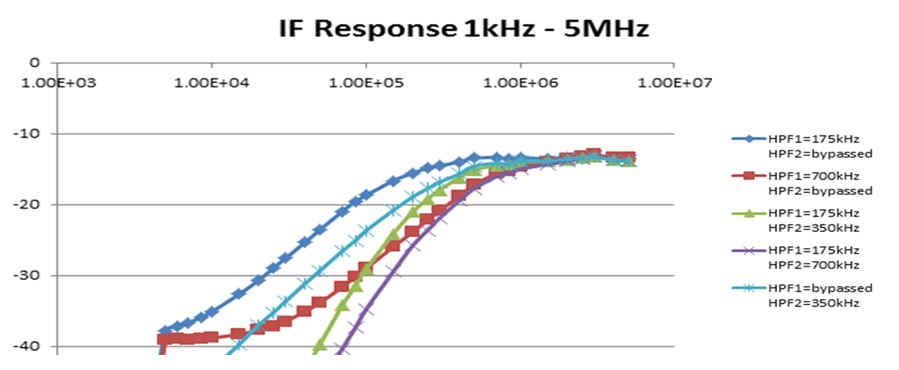Hello,
could you explain a bit more on analog high-pass filters HPF1 and HPF2 from the user point of view?
I understand that the filters included in series after mixer help suppress the low-frequency parasitic Tx-Rx leakage. Then why do you need two filters with pretty high cut-off frequencies?
That creates a significant blind zone in front of the radar. For example, the minimal corner frequencies of 175 KHz and 350 KHz give me a blind zone up to 92 cm for a sweep of 3.7 GHz
over 64 microseconds. For longer sweeps and/or smaller bandwidths, i.e. more relaxed sensing, the blind zone only increases which limits target detection in proximity. Can you suggest a rule
for selection of the two corner frequencies? Thanks a lot in advance.
Regards,
Timofey


